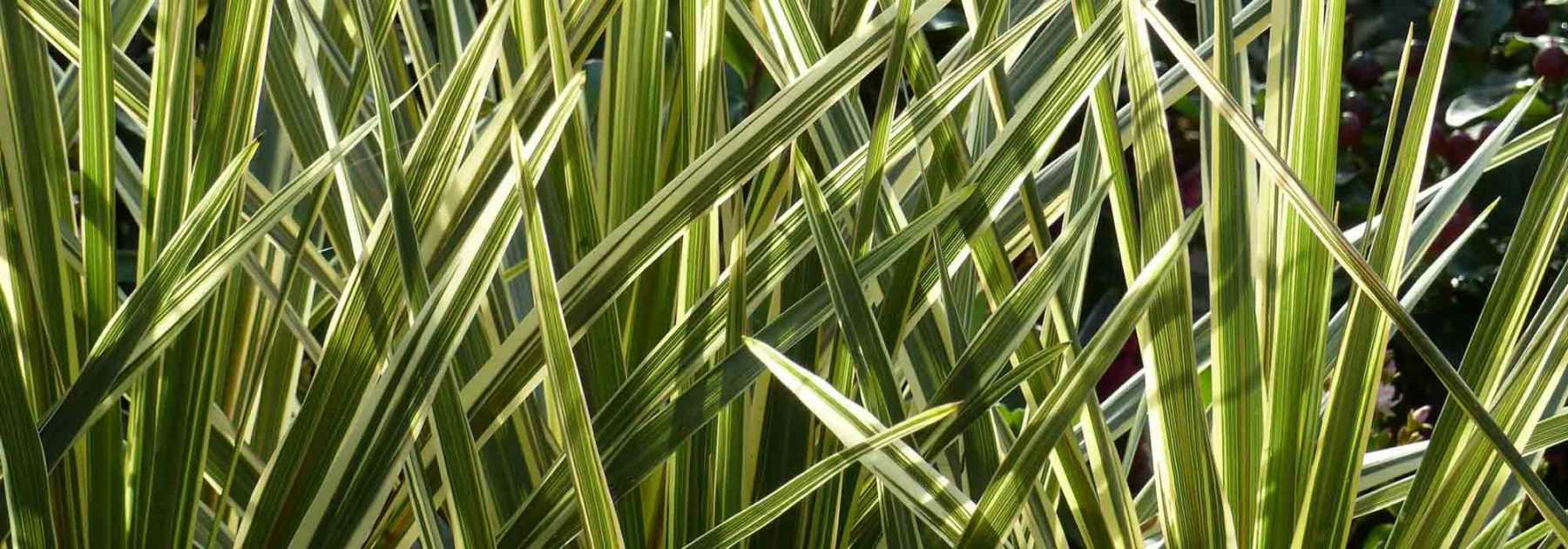
Cordyline: Planting, Growing and Care
Contents
The Cordyline in a nutshell
- This is an evergreen shrub with a palm-like appearance
- It thrives easily in open ground in gardens spared from severe frosts
- Used as a standalone feature or planted in groups, it adds an exotic touch
- Tolerant of sea spray, it’s perfect for coastal gardens
- It makes an ideal architectural plant for terraces or balconies in large containers
Our expert's word
Cordyline or Dracaena is a beautiful plant with a palm-like appearance. It offers a striking, architectural silhouette. Its upright leaves, green in Cordyline australis and Cordyline indivisa or bronze-red in Cordyline australis ‘Red Star’, sometimes variegated, are highly prized for their exotic, elegant look.
This is a mild-climate plant, sensational and impossible to ignore. Whether planted alone or in groups, it is undoubtedly the centrepiece for a large exotic rockery or in minimalist, contemporary settings.
Widespread in southern France, Cordyline adds an exotic touch to gardens in our mildest regions. Behind its tropical appearance lies a hardy yet somewhat tender shrub, though it can withstand frosts down to around -8°C. It thrives best in gardens with mild climates spared from severe frosts: Cordyline particularly favours Atlantic and Mediterranean coastal regions. Elsewhere, it should be grown like an orangery plant, in a large pot that can be brought indoors to a conservatory or greenhouse during winter.
Originating from southern regions, Cordyline retains great tolerance for summer heat and drought. It thrives in full sun or partial shade, in rich soil that stays cool in summer and is well-drained. It tolerates sea spray well, making it an excellent choice for coastal gardens.
Long-lived once established, it requires little maintenance, as it is generally quite undemanding and rarely affected by diseases.
Discover our beautiful selection of Cordylines for guaranteed exotic appeal.
Botany
Botanical data
- Latin name Cordyline
- Family Agavaceae
- Common name Cordyline
- Flowering From July to August
- Height 0.60 to 10 m
- Exposure Sun, partial shade
- Soil type All types, well-drained
- Hardiness -5°C to -10°C
The Cordyline, also known as Dracaena, is a tree-like perennial plant from the agave family. The Cordyline genus includes around fifteen species of evergreen shrubs and small trees, the tallest of which resemble palm trees. It grows naturally in diverse habitats ranging from open woodlands to exposed hillsides and riverbanks in Southeast Asia, New Zealand and the Pacific. Naturally thriving in warm, dry climates, this frost-sensitive exotic plant has adapted to our oceanic and mild climate regions.
Only two species are commercially available, the extremely rare C. indivisa (almost impossible to find) and the very common Cordyline australis, also called Dracaena australis, from which many varieties have been developed, such as Cordyline australis ‘Red Star’ with its bronze-red foliage. The original australis species from New Zealand is one of the hardiest.
Cordyline fruticosa (a houseplant), Cordyline banksii and Cordyline stricta are also rarely cultivated in our latitudes.
In the wild, cordyline can reach 20 m in height. In our gardens, it remains much smaller than in its natural environment and won’t exceed 6 to 10 m in height with a 4 m spread after at least 5 years of cultivation. Some varieties (‘Sunrise’) are distinguished by their smaller size, not exceeding 2 to 3 m in height. Specimens grown in pots, with limited space, remain about half this size. Slow-growing, it nevertheless has a long lifespan.

Cordyline indivisa
The Cordyline is a substantial plant with an upright, shrubby palm-like habit that doesn’t branch out. It initially forms a leafy rosette in its early years before eventually developing into a small single-trunked tree that may branch slightly at the top with age. The trunk’s bark is fissured, resembling cork, pale to dark grey, and spongy to the touch.
In the C. indivisa species, the trunk consists of accumulated leaves whose overlapping sheaths become visible as they fall away.
This decorative evergreen foliage embodies the charm of the Antipodes and resembles that of yuccas, though more flexible. It consists of long, entire leaves gathered in dense tufts, either upright towards the sky or slightly crowning the trunk.
The more or less arching leaves are leathery, 30 to 90 cm long and narrow (3 to 7 cm wide at the base), linear or shaped like pointed swords. They widen with age.
While the original species has light green to yellow-green leaves, cultivars stand out with their magnificent colours and colourful variegations revealed in numerous parallel veins. Their colours range from pale green streaked with pink to red tones (Cordyline australis ‘Sundance’) to bronze red, including green streaked with pale yellow and almost fuchsia pink (‘Sunrise’).
Flowering is rare, especially in pots. When mature and grown in open ground, Cordyline flowers in summer. Huge dense panicles 60 to 150 cm long appear, bearing small six-petalled white or pinkish-white flowers. Honey-producing and delicately scented, they remain on the shrub for a long time.
They develop into decorative fruits in the form of berries less than 1 cm in diameter, bluish-white, blue, red or purple.
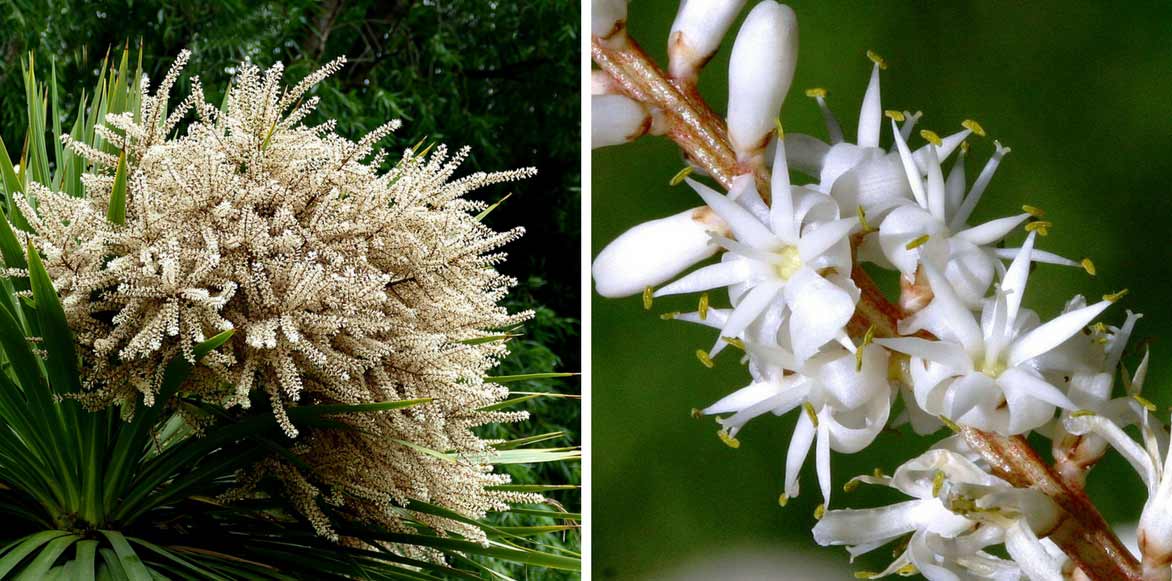
The flowering of Cordyline australis
This beautiful southern plant thrives in sunny locations with fairly moist summer soil that’s well-drained, preferably sheltered from cold northerly winds.
Cordyline can be planted throughout France but its cultivation varies from region to region. It’s a frost-sensitive plant, though the hardiest varieties like C. australis can withstand short frosts of around -5/-8°C. It’s an easy-to-grow plant in regions with mild winters. In open ground, it’s best suited to Mediterranean or Atlantic climates. Elsewhere, in regions with harsh winters, it should be grown in large pots that can be moved from terrace to conservatory during the cold season.
With its graphic silhouette reminiscent of palm trees, it adds a lovely exotic touch to the garden. A summer garden essential, it fits perfectly in Mediterranean-inspired gardens and can be planted as a focal point in borders, as an avenue tree, or as a windbreak. The coloured varieties work wonders as standalone specimens. In colder regions, it brings a contemporary note to terraces and balconies.
Species and main varieties
While the genus includes around fifteen species, only two are commonly found in nurseries: the less widespread Cordyline indivisa, with its false trunk composed of large, broad, lush leaves, and the very common Cordyline australis, with its plain green leaves, from which many varieties with variegated or coloured foliage have been developed. Examples include Cordyline australis ‘Red Star’ with its bronze-red foliage, Cordyline australis ‘Sundance’, with green leaves edged in bronze and streaked with pink-red, and C. a ‘Pink Passion’ with violet leaves bordered by almost fluorescent fuchsia.

Cordyline australis
Cordylines are all fairly tender (-5°C to -8°C), but those with purple or variegated foliage are even more sensitive to frost and direct sunlight, which can scorch their leaves.
In regions with harsh winters, they should be grown in pots and brought indoors before the first frosts. Many selections remain compact, rarely exceeding 2m in pots, and will always make a striking display on a terrace or balcony.

Cordyline australis - Cabbage Tree
- Flowering time July to September
- Height at maturity 6 m

Cordyline australis Red Star - Cabbage Tree
- Flowering time August to October
- Height at maturity 3,50 m

Cordyline australis Sundance - Cabbage Tree
- Flowering time July, August
- Height at maturity 4 m

Cordyline australis Southern Splendour - Cabbage Tree
- Flowering time August to October
- Height at maturity 2 m

Cordyline australis Sunrise - Cabbage Tree
- Flowering time August to October
- Height at maturity 2 m
Discover other Cordyline
Planting
Where to Plant Cordyline
Cordyline is an exotic plant suited to warm climates. It cannot tolerate temperatures below 10°C, which is why, in harsher climates, they should be planted in pots and brought indoors for winter in a greenhouse or unheated conservatory. Cordyline dislikes heavy frosts, which can shorten its lifespan.
Particularly well-suited to Mediterranean climates, it also thrives in the slightly cooler soils of our southern Atlantic coast. Wind and salt-spray resistant, it’s an excellent coastal plant, ideal for seaside gardens.
Place green-leaved Cordylines in full sun, in rich soil that remains moist in summer yet well-drained. Green varieties are slightly hardier, while coloured, purple or variegated types show greater sensitivity—both to cold and direct sunlight, which may scorch their foliage: give them a sheltered spot in partial shade, protected from prevailing cold winds and draughts.
Originating from southern regions, it retains good drought resistance and tolerance to intense summer heat once established. However, it dislikes waterlogged soil and excess moisture in winter. As it particularly struggles with heavy, water-retentive soils in colder months, it naturally suits dry slopes or the top of large exotic or contemporary rockeries.
Easy to grow in pots or borders, it lends a distinctly exotic touch to gardens and terraces. It works well as a focal point in beds, as a lining tree, or as a coastal windbreak.
When to Plant
In spring, from May through June—always once frost risks have passed.
How to Plant
Cordyline prefers well-draining soil. If your ground retains moisture, plant it atop a mound to avoid waterlogging.
In the ground
- Loosen the soil and dig a hole 3–5 times wider than the root ball
- Add a layer of pumice, river sand or gravel to the base
- Position the shrub at soil level, centred in the hole
- Mix Mediterranean plant compost into the excavated soil
- Hold the plant upright, backfill, and firm with your foot
- Water thoroughly after planting, then 1–2 weekly during the first growing season
In pots
The substrate must be very free-draining to prevent root rot and stagnant moisture. Potted specimens need more frequent watering—but avoid overwatering, which yellows leaves!
- Line a container (min. 50cm diameter) with drainage material (pot shards, gravel or clay pebbles)
- Plant in light, well-draining compost
- Water when dry in summer (approx. twice weekly)
- Reduce to every 10 days in winter
- Apply liquid fertiliser fortnightly during growth
- Move pots to frost-free shelter in autumn in cold regions
→ Learn more about growing Cordyline in pots in our guide!
Propagation
While it’s possible to propagate Cordyline by sowing seeds in February-March or through cuttings, we particularly recommend propagation by offsets, which is also done in spring and is relatively quick.
By offsets
- In March, detach well-rooted offsets from the base of the plant, about 1–2 cm tall
- Plant them in a tray filled with a moist mixture of compost and sand
- Water regularly to prevent the mixture from drying out
- Place them in a bright, warm spot with a constant temperature of 20°C
- After 4 to 6 weeks, once the shoots reach about 6 cm, transplant them into 10–15 cm pots
- Fertilise during growth with a liquid fertiliser
- They can be planted out in the ground once they are strong enough
→ Learn more with our tutorial: How to propagate Cordyline?
Maintenance, Pruning and Care
Cordyline is easy to grow in favoured regions where frost is not too severe or prolonged.
Once established, it requires little attention and becomes increasingly drought-resistant. Outdoor-grown Cordylines need less maintenance than potted specimens.
Apply compost around the base of the plant in spring and autumn. In summer, water once or twice a week, no more, and only during prolonged dry spells to keep the roots cool but never waterlogged. Reduce watering frequency in winter to once every ten to fifteen days.
Cordyline does not require specific pruning. Maintenance simply involves removing dead or damaged leaves and spent flowers as needed.
The crown of young, ground-planted Cordylines should be protected with horticultural fleece during their first few winters and given a generous mulch of dead leaves before cold weather arrives to ensure successful overwintering. Potted specimens should be moved to an unheated greenhouse or conservatory (where temperatures remain above 7°C) as winter approaches.
For more information, explore our guide: “Overwintering Cordyline“
For pot-grown varieties, apply liquid fertiliser twice a month during the growing season (March to September). Repot every 3 to 4 years.
Diseases and potential pests
Cordyline has no known pests, only greenhouse-grown plants may be more susceptible to scale insects and red spider mite infestations. When grown in good conditions, you can keep your cordyline for a long time. Monitor its water needs. When planted in the ground, watering should be moderate as leaves may turn yellow if overwatered.
→ Learn more about cordyline diseases and pests in our advice sheet.
Pairing
Beautiful all year round with its architectural silhouette and evergreen foliage in green, purple or variegated hues, the Cordyline helps create an exotic-style garden and original, colourful displays. It works wonders in minimalist, mineral settings and is widely used in contemporary or Mediterranean-inspired compositions, particularly in coastal areas.
It makes an excellent standalone feature on sunny slopes or even in partial shade, or to structure the centre of exotic borders surrounded by Astelia chathamica Silver Shadow.
Pair it with plants that thrive in similar growing conditions such as King Protea, Euphorbia characias, Nolina hibernica or Giant Fennel.
This striking plant pairs beautifully with the lush foliage of banana plants or the structural forms of palms and Yuccas, alongside Dasylirion glaucophyllum or agaves.
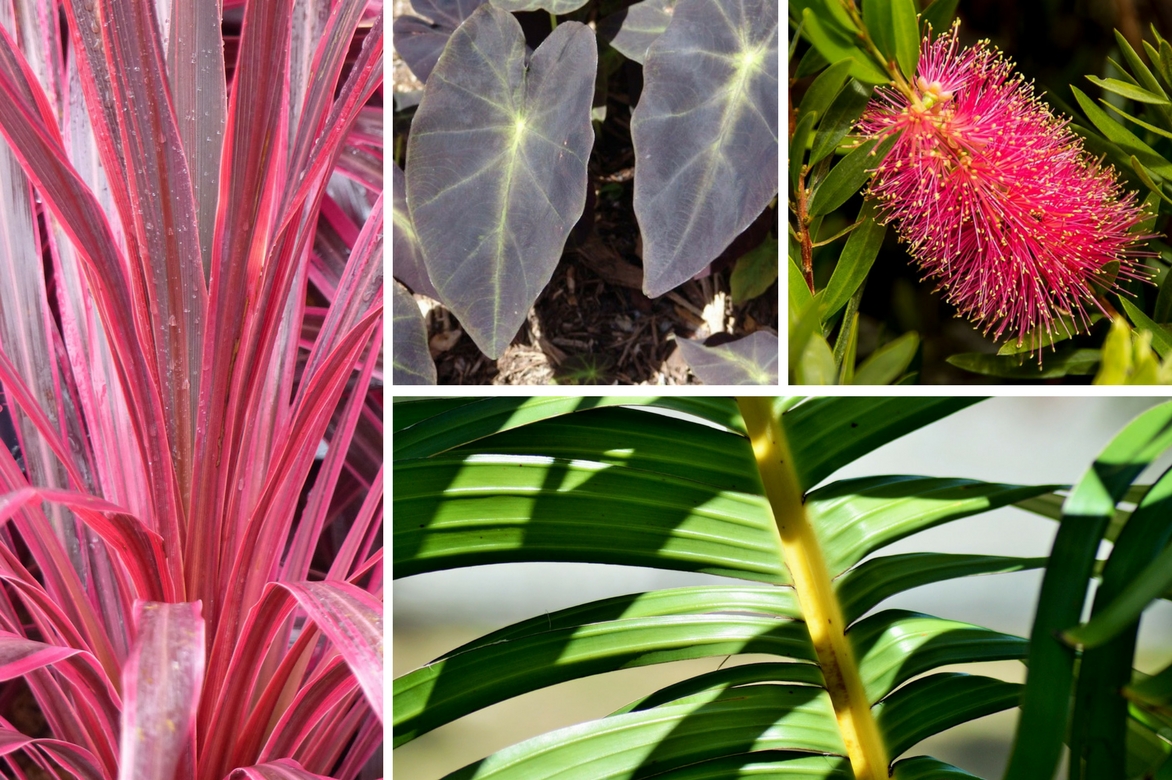
An exotic border featuring: Cordyline Australis sunrise, Colocasia, Callistemon and Banana Tree
For a contrasting exotic look, pair pink and purple varieties (‘Southern Splendour’, ‘Sunrise’) with Leptospermum scoparium ‘Red Damask’ with its long-lasting deep red blooms, clumps of Muhlenbergia capillaris (a true pink cloud in late summer), Giant Honeyflower, Leucadendron ‘Safari Sunset’, Colocasia Sangria, Lophomyrtus ‘Magic Dragon or even Callistemon or Ricinus communis ‘Carmencita Red’.
For a modern exotic border, surround Cordyline with bulbs of Watsonias, Kniphofias, cannas, Crocosmias and Carex.
With tall ornamental grasses like giant miscanthus or paired with bamboos, it’s also a wonderful companion for a modern garden with clean lines.
In coastal gardens, it’s perfect alongside fellow Oceanian plants like Pittosporum tenuifolium Tom Thumb, Pseudopanax Ferox or Olearia macrodonta ‘Major’ (New Zealand Holly).
In colder regions, it thrives in large containers on patios or balconies, creating a truly exotic look alongside Trachycarpus wagnerianus or miniature palms.
Useful resources
- Discover a wide selection of exotic shrubs and plants
- Explore our plant pairing ideas with Cordyline
- Our advice sheets: 5 Purple-leaved Cordylines; 5 Variegated Cordylines
- Check out our tutorial: How to take Cordyline cuttings?
Frequently asked questions
-
Is there a frost-resistant cordyline?
Yes, there are frost-hardy cordylines! Despite their very exotic appearance, Cordylines are more cold-resistant than one might think. These semi-hardy plants can survive brief frosts of around -5/-7°C, provided they are sheltered from humidity and cold northerly winds. The foliage starts to suffer damage from -5°C onwards. Varieties with coloured foliage tend to be more sensitive to cold. Severe frosts can shorten their lifespan: these tender plants cannot withstand temperatures below 10°C.
They are best suited to open ground cultivation in coastal gardens with Atlantic or Mediterranean climates. Before winter sets in, generously mulch the base with a layer of dead leaves.
In all other areas, they should be grown in pots and brought indoors for winter in a greenhouse or unheated conservatory that remains frost-free.
-
The leaves of my cordyline are turning yellow, what should I do?
This sudden yellowing mainly affects cordylines grown in pots or, more rarely, those planted in waterlogged, poorly aerated soil. The leaves turn yellow due to overwatering or exposure to cold. While cordylines appreciate a humid environment with good humidity levels in summer, they dislike heavy, waterlogged soils in autumn and winter.
In the ground, watering should be moderate. In summer, water young plants once or twice a week, but only during prolonged dry spells.
In pots: Water regularly in summer but avoid excess, allowing the soil to dry out between waterings. In winter, watering once a month is sufficient. Place a tray of clay pebbles beneath the pot to maintain some humidity.
Most importantly, ensure your cordyline is protected from cold draughts.
- Subscribe!
- Contents


































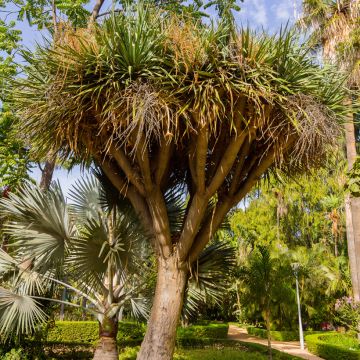
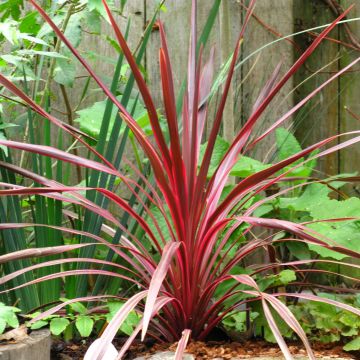
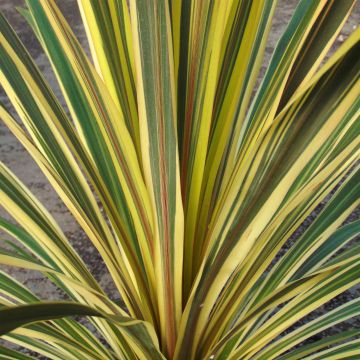

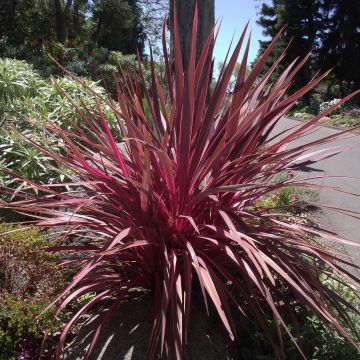
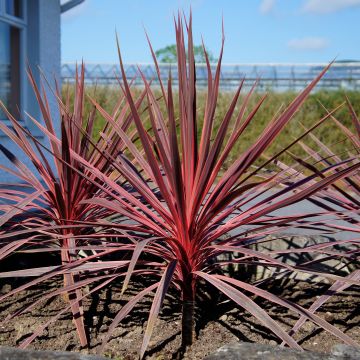
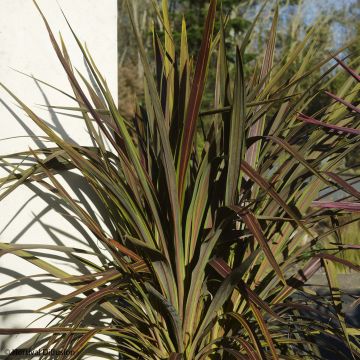

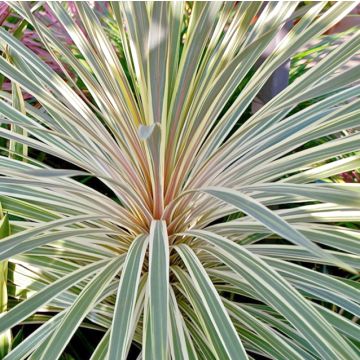
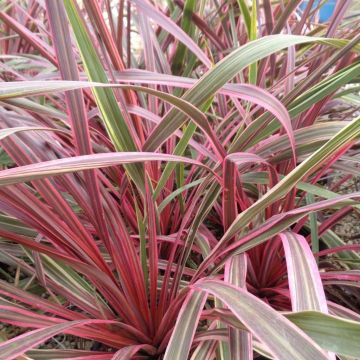
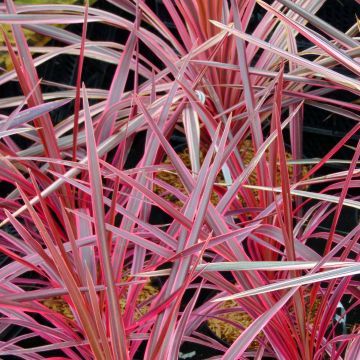
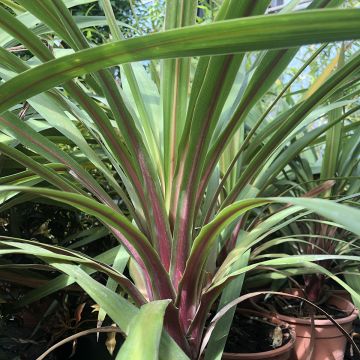
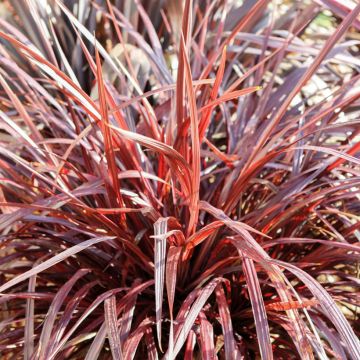
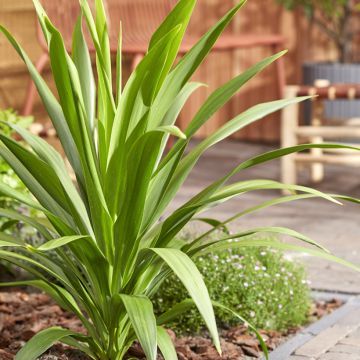
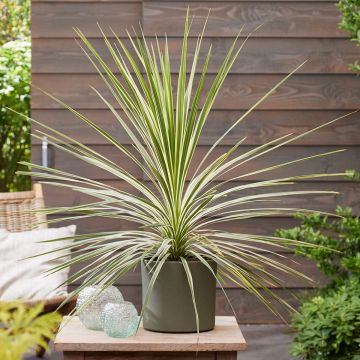
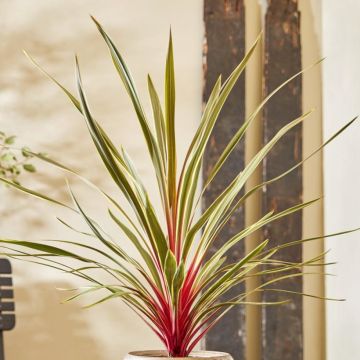
Comments